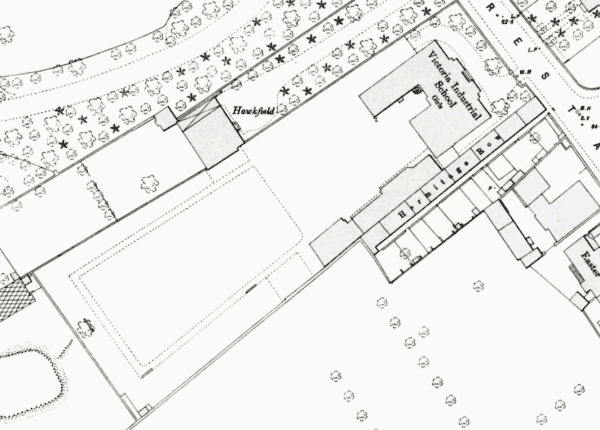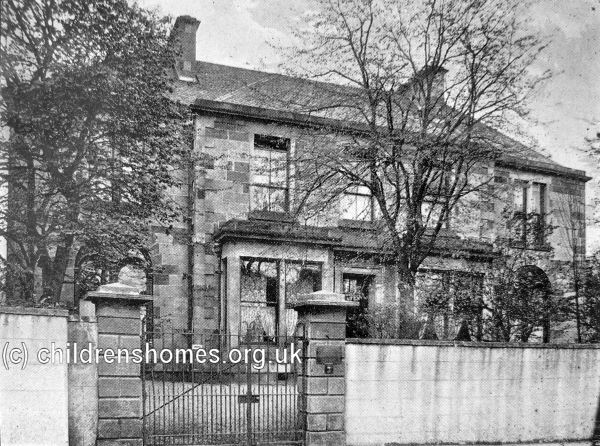Victoria Industrial School for Girls, Leith, Edinburgh, Midlothian, Scotland
In 1889, the female inmates of the Leith Industrial School for Boys and Girls on Lochend Road were transferred to separate accommodation at a large property known as Woodville House at 92 Restalrig Road, Leith. The new establishment, named the Victoria Industrial School for Girls, was formally certified for use as an Industrial School on 1 April 1889. The girls were transferred to their new quarters on 2 May and the official opening by Lord Hopetoun took place on 27 May. The new building could house up to 60 girls aged from 8 to 12 years of age. The superintendent was Miss Elizabeth Mackenzie, previously matron at the Lochend Road school.
The Restalrig Road site is shown on the 1894 map below.

Victoria Industrial School for Girls site, Leith, Edinburgh, c.1894.

Victoria Industrial School for Girls, Leith, Edinburgh, early 1900s. © Peter Higginbotham
The industrial training at the school included knitting, in all it forms, and needlework, The girls made all their own clothing and also made shirts and socks for the boys' school. They also did all the laundry work and assisted in the kitchen and housework.
An inspection report in 1896 described the school as a thoroughly home-like building, situated in a quiet road about 1½ miles from the sea. The girls had physical drill to music, and a maypole in the playground. They went for a walk once a week, except during the month-long summer holiday when they went out to the sea every day. Those with fairly decent homes (just under two-thirds of the girls) went home for a half-day once a fortnight. To encourage good behaviour, a mark system with monetary awards was in use. A doctor paid weekly visits but there was no regular dentist. The girls all used toothbrushes. The school had a good library.
Almost all the girls went into domestic service on leaving the school and there was said to be a great demand for them. Rewards were given to girls who kept their first place for at least 12 months.
Following a steady decline in the number of girls being placed at the school after the First World War, its closure was announced on 20 October 1922. The property is believed now to be in private residential use.
Records
Note: many repositories impose a closure period of up to 100 years for records identifying individuals. Before travelling a long distance, always check that the records you want to consult will be available.
- None identfied at present — any information welcome.
Bibliography
- Higginbotham, Peter Children's Homes: A History of Institutional Care for Britain's Young (2017, Pen & Sword)
- Mahood, Linda Policing Gender, Class and Family: Britain, 1850-1940 (1995, Univeristy of Alberta Press)
- Prahms, Wendy Newcastle Ragged and Industrial School (2006, The History Press)
Links
- None noted at present.
Except where indicated, this page () © Peter Higginbotham. Contents may not be reproduced without permission.


